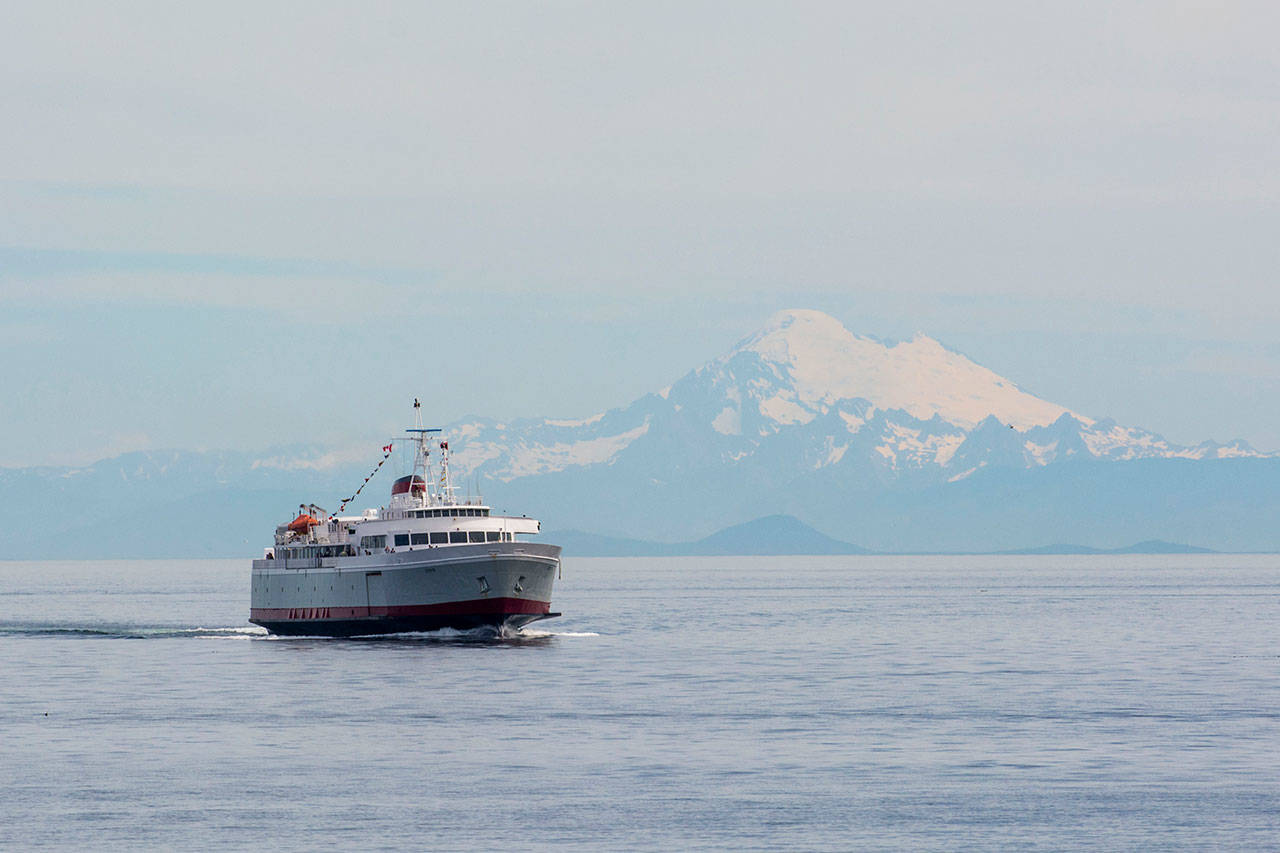PORT ANGELES — A newly released study shows that the Black Ball Ferry Line pumps more than an estimated $64 million into the local economy and supports the employment of 626 people.
Daniel Underwood, president of Olympus Consulting hired by Black Ball, used a survey of passengers on the MV Coho ferry, which makes daily trips across the Strait of Juan de Fuca between Port Angeles and Victoria, to show that the 148,348 traveling parties each injected an average of $433 into the local economy.
“As a destination hub it directly channels travelers to businesses where they make expenditures that support employment, employee compensation, proprietor income, and pay state and local taxes,” the report says. “Every employee at Black Ball Ferry Line helps support an additional employment of 9.7 people in the local economy.”
Ryan Malane, vice president of marketing for Black Ball Ferry Line, said what was surprising was that the economic impact increased by about $25 million since 2011. He said a study conducted then determined Black Ball Ferry Line contributed $40 million to the local economy.
“That was a pretty shocking number,” Malane said.
Marc Abshire, Port Angeles Regional Chamber of Commerce director, said the number isn’t surprising, but it is impressive.
“We’ve felt for quite a long time that their economic impact on our entire region was a lot greater than people think,” Abshire said.
“When I heard Black Ball had commissioned Dan Underwood to do the research and create a study, I was excited about putting the results of that in front of the business community.”
Malane said the company performs customer surveys every two years anyway, but the results this year are particularly important as Black Ball prepares to deal with recent federal legislation that requires changes to customs processes.
“As we begin discussions on new potential facilities with government agencies on both sides, one of the questions that gets asked is ‘what is the economic impact of this business,’ ” Malane said in an email.
He said a portion of that can be attributed to inflation, but suggested that an improving economy lead to an increase in ridership and an increase in the amount people are willing to spend.
Underwood wrote that though the MV Coho is one of Port Angeles’ “defining images,” Black Ball Ferry Line offers many other services that are known to tourists but likely are unknown to local residents.
This includes support of the Juan de Fuca Festival of the Arts, Sequim Lavender Weekend, Dungeness Crab & Seafood Festival and “various kinds of arts and draught tours.”
“Over the last 10 years, we have grown into a significant travel packaging business selling hotel rooms, tours, festivals (i.e. Crabfest) and attractions tickets on both sides of the border,” Malane said an email.
“With the increase in cruise ship traffic in Port Angeles, we were asked to provide shore excursion services for several small cruise lines. As a result, we entered into the group tour and charter business with a fleet of nine buses.
“This business has grown dramatically as more local groups use us for charters.”
According to the report, 2,800 Canadians sailed to Port Angeles on the MV Coho to participate in Crab Fest.
Last year there were 472,104 paying passengers and by Nov. 15, the day the report was issued, ridership was at 97 percent of what it was in 2018.
The survey was randomly administered during four two-way crossings in July of this year. The average traveling party was 3.2 people, 72 percent of which were traveling to Port Angeles for pleasure or vacation.
It included a 13 questions that captured origin of travel, destinations, activities and expenditures by category and local.
Up to 50 surveys were returned during each voyage, though some people didn’t answer all the questions. Sample size by question ranged from 321 to 269.
Of those travelers, 35 percent were from Washington, 10 percent from Oregon, 9 percent from California and 29 percent were from other regions across the country.
Of those surveyed, 14 percent were from Canada and 4 percent were from other international places.
When counting indirect and induced effects, Black Ball Ferry Line passengers contributed $27.9 million toward 974 jobs and paid nearly $11 million in state and local taxes.
“An important way to understand this impact is to recognize that the 91 people employed by Black Ball Ferry Line help provide employment for 883 people in the Port Angeles area,” the study said.
The average party spent two nights on the Olympic Peninsula, half of which were spent at hotels and motels, Airbnb and VRBO, and bed and breakfasts. The study found that Black Ball Ferry Line passengers contributed $20 million to direct compensation for 718 local employees and an additions $8.6 million toward Airbnb and bed and breakfast owners.
Malane said another surprise was just how many people are using vacation rentals instead of hotels and motels.
The study found that of the nights spent in lodging on the Olympic Peninsula, 35 percent were spent at vacation rentals.
He said there has been a “dramatic increase” in vacation rentals on both sides of the water.
“As a company that resells hotel rooms, that’s something we want to understand,” Malane said.
